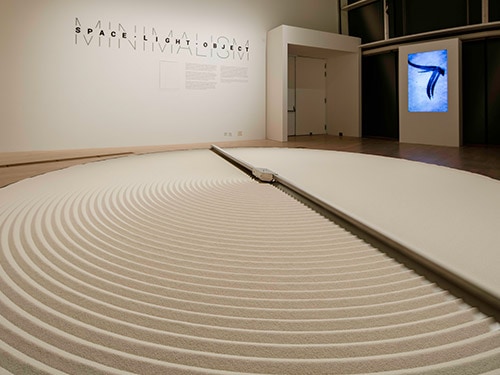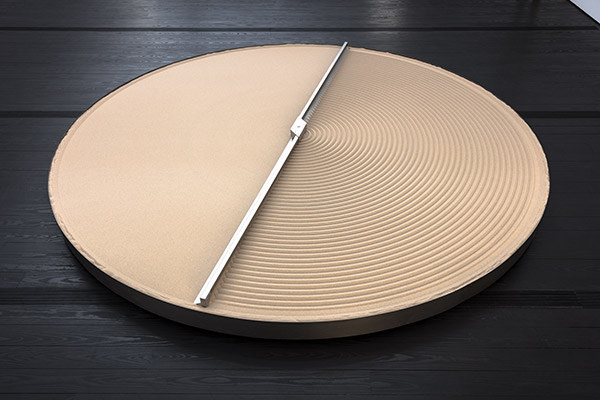

Introduction



+ and – by Mona Hatoum (1994–2004)
Steel, aluminum, sand and electric motor, 27 x 420 x 420 cm
Mona Hatoum’s circular sculpture at the centre of the gallery takes inspiration from Japanese Zen gardens. Building on an earlier artwork from 1979, + and – mechanizes the process of creation and destruction. It contains over 750kg of sand, and rotates at a rate of five revolutions per minute. The repeated sweeping movements and hypnotic sound evoke both absence and presence, existence and non-existence.


Enso by teamLab (2017)
Digital work, 18 min 30 sec (loop)
Japanese collective teamLab have brought the ensō into the 21st century with a digital version that glides into existence before slowly dissolving into nothingness. In the Buddhist tradition monks were often taught this style of ink painting as a type of meditative practice. When the mind is still the monk takes up a brush and, in a single stroke, attempts to paint a perfect circle – the ensō. Whilst perfection is almost impossible to achieve, this artistic expression of zero, or nothingness, stimulates deep contemplation.